Laptops are some of the most important tools people use today. Whether you're a student submitting homework, at work typing away at documents, spreadsheets or presentations, or you're just someone who wants to access resources online and connect with family and friends, you want a notebook with the components and features you'll need to get the job done. That means a great screen, a comfortable keyboard, and long battery life (nice design doesn't hurt, either!). If you’re looking for a powerful laptop that easily fits in your bag and doesn’t break your back, you're looking for what some call an "ultrabook."
The “ultrabook” moniker was originally coined by Intel in 2012 and used to refer to a set of premium, super-thin laptops that met the chipmaker’s predefined standards. Much of this occurred as the PC world was first catching up to the original MacBook Air. However, just as many people refer to tissues as Kleenexes or web searching as Googling, the term ultrabook commonly refers to any premium ultraportable laptop, whether it carries Intel’s seal of approval or not.
Of course, there's always new tech coming down the pipe. Intel's most recent chips are its Intel Core Ultra chips and 14th Gen Core HX processors. The former are in productivity and gaming machines, while the latter are for high-performance gaming.
AMD's first 8000-series "Hawk Point" processors are in devices like the Asus Zephyrus G14, and we saw the first Strix Point machines at Computex. On Macs, Apple's top chips are the M3 series. The standard M3, M3 Pro, and M3 Max can be found in the MacBook Pro and MacBook Air lineup. The recently announced M4 is only in iPads, for now. And with Qualcomm Snapdragon X Elite and Plus series chips pushing Windows on Arm, the laptop wars are heating up with competitive devices that don't run on x86 chips and prioritize battery life.
October Prime Day Ultrabook Deals
Why you can trust Tom's Hardware Our expert reviewers spend hours testing and comparing products and services so you can choose the best for you. Find out more about how we test.
It's October Prime Day, which means there are all sorts of deals on ultrabooks and premium laptops. We're tracking all the savings on our best October Prime Day PC and laptop deals page and our October Prime Day live blog. One of our favorites is below:
Best Ultrabooks and Premium Laptops You Can Buy Today

The Best Ultrabook (and 2-in-1) Overall
Specifications
CPU: Intel Core Ultra 7 155H
GPU: Intel Arc integrated graphics
Display: 14-inch, 2880 x 1800, 16:10, OLED touchscreen
Weight: 3.19 pounds (1.45 kg)
Reasons to buy
+ Beautiful OLED screen Excellent webcam Attractive, sturdy design Comfortable keyboard and touchpad
Reasons to avoid
- Expensive Not a ton of ports
The HP Spectre x360's new 14-inch incarnation makes some changes from prior versions, introducing a 16:10 display instead of 3:2 and switching to in-house speakers, but it's still our favorite Windows laptop out there. You will have to save up a bit for it, though.
HP has a bright, colorful OLED, 2880 x 1800 screen, which we love even though several people on the Tom's Hardware team were fans of the old aspect ratio. The new 9MP webcam is one of the best we've ever tested. And the aluminum design feels like a premium product should.
On this laptop, HP has switched from Bang & Olufsen to speakers from Poly, which it owns. Our reviewer still found that the speakers were excellent, loud, and balanced.
There aren't a ton of ports on the Spectre, but HP did manage to squeeze a USB Type-A port in there with a drop-jaw hinge.
Our review unit came with an Intel Core Ultra 7 155H, 32GB of RAM, and a 2TB SSD for $1,899, which is a bit pricey, though HP offers customization options on its website.
Read: HP Spectre x360 14 (2024) Review

Incredibly Long Battery Life
Specifications
CPU: Qualcomm Snapdragon X Elite X1E-78-100
GPU: Qualcomm Adreno GPU
NPU: Qualcomm Hexagon (45 TOPS)
Display: 14-inch, 1920 x 1200 IPS
Weight: 2.62 pounds (1.19 kg)
Reasons to buy
+ Extraordinary battery life Bright screen Great keyboard and navigation Solid performance
Reasons to avoid
- Expensive Slower SSD than competitors Windows on Arm still not compatible with all software
Look, I can try to sell you on the ThinkPad T14s's bright screen. I could try to tell you that ThinkPads are known for their great keyboards, or that you might appreciate the TrackPoint so that you don't have to take your fingers off the home row while you move the mouse.
Alternatively, I could point out that it lasted 21 hours on our battery test. You read that right. That's the longest we've seen.
Much of that is likely due to the Qualcomm Snapdragon X Elite processor's efficiency, though the 1920 x 1200 IPS panel probably helped (high-res OLED touch screens often require more power). The Snapdragon X Elite also offered solid performance.

Another Great 2-in-1
Specifications
CPU: Intel Core i7-1360P
GPU: Intel Iris Xe (integrated)
Display: 14-inch, 2800 x 1800 OLED touchscreen
Weight: 3.09 pounds (1.4 kg)
Reasons to buy
+ Vibrant OLED display Strong performance Active stylus included USB Type-A and Thunderbolt ports
Reasons to avoid
- Difficult to upgrade Stiff keyboard -Loud fans
The Lenovo Yoga 9i (Gen 8) is a 14-inch 2-in-1 with an attractive, portable design, a bright display and a mix of ports. Its rounded corners aren't just about form, they make it comfortable to use, and still leave from for Thunderbolt 4 and USB Type-A.
The screen is beautiful. On our colorimeter, it covered 201% of the sRGB gamut and 142.1% of the DCI-P3 spectrum.
Lenovo throws a stylus in the box, so those who want the option to take notes by hand or with a keyboard won't need to buy any extra accessories. We did find the keyboard to be a bit stiff, however.
And Intel's Core i7-1360P offers strong performance, with a speedy SSD and strong single-core and multi-core benchmarks.
Read:
Lenovo Yoga 9i (Gen 8) Review
The Best Mac for Most People
Specifications
CPU: Apple M3 (8-core CPU)
GPU: 10-core GPU
Display: 13.6-inch, 2560 x 1664 or 15.3-ich, 2880 x 1864; True Tone; 60 Hz
Weight: 2.7 pounds (13-inch), 3.3 pounds (15-inch)
Reasons to buy
+ Thin, light, and fanless Long battery life M3 supports two external monitors (with the lid closed) Sharp, 1080p webcam Excellent touchpad 15-inch has great speakers
Reasons to avoid
- RAM and SSD upgrades are very pricey Display notch can be distracting
Apple's MacBook Air line has long been a popular go-to for entry-level Mac users, and now Apple has two sizes — 13-inch and 15-inch — on the same upgrade schedule. The two systems use most of the same components, differing primarily on display size and speakers. They're both excellent, portable, and powerful.
Both laptops have bright displays, use Apple's squared design, and lasted over 15 hours on our battery test. Each has the same set of ports and sues MagSafe, a magnetic power connector. They also both have a notch in the display to house the 1080p webcam.

Outside of the displays, the big difference is audio. The 15-inch laptop has six speakers and force-cancelling woofers, while the 13-inch laptop has just four speakers.
The fanless design is totally silent, but it also means the M3 chip isn't actively cooled. That means yes, the chip will throttle for intense work like video editing and rendering. (In our testing, we found the 13-inch laptop throttled faster possibly because the 15-inch Air has more surface area to cool the chip). But for most tasks, like email, documents, and spreadsheets, you shouldn't have any worries.
Read: MacBook Air (M3) review
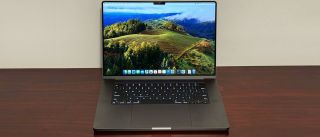
A Powerful Mac Option
Specifications
CPU: Apple M3 Max (16-core)
GPU: 40-core (Apple M3 Max integrated)
Display: 16.2-inch Liquid Retina XDR display, 3,456 x 2,234, 120 Hz Pro Motion
Weight: 4.8 pounds (2.16 kg)
Reasons to buy
+ M3 Max offers powerful performance Long battery life Great build quality Excellent Mini-LED display
Reasons to avoid
- Memory and SSD upgrades are extremely pricey
Apple's MacBook Pros on Apple Silicon haven't changed much in design, except now they come in Space Black. (And Space Black looks great!). Apple's latest changes are still on the inside, with its latest M3 Pro and M3 Max chips.
We tested the 16-inch MacBook Pro with an M3 Max and were impressed by its battery life: 17 hours and 11 minutes on our battery test, even while powering a vivid Mini-LED screen. The chip is efficient.
This latest MacBook Pros retain the wide variety of ports, including HDMI and an SD card slot, that we loved last year, as well as a bright, vivid Mini-LED display.
While the design hasn't changed, that means you also get excellent speakers and a comfortable keyboard with full-size function keys. But it also means that there's still a notch in the display to hold the 1080p webcam, which some might find to be distracting.
For those who need more graphics power, you may want to step up to the M3 Max, goes up to 40 graphics cores. If you want more battery life, the 16-inch MacBook Pro has a larger battery (100 WHr vs the 14-incher MacBook Pro's 72.4 WHr), and endured.
If you prefer a smaller screen, you may want to consider the 14-inch Macbook Pro, which also comes with your choice of M3 Pro or M3 Max. We haven't had the chance to test the new entry level MacBook Pro — a 14-incher with a regular M3 and fewer ports — but that one is expensive for the amount of RAM you get in it, and with upgrades benign so pricey, you may want to start with the more powerful options anyway.
Read: MacBook Pro (16-inch) Review
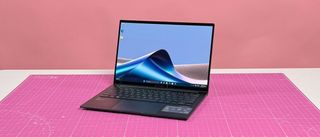
Good price for high specs
Specifications
CPU: Intel Core Ultra 7 155H
GPU: Intel Arc integrated Graphics
Display: 14-inch, 2880 x 1800, 16:10, OLED touchscreen
Weight: 2.82 pounds (1.28 kg)
Reasons to buy
+ Thin and light build Good price for 32GB of RAM and 1TB of storage Fast, bursty performance Colorful screen
Reasons to avoid
- Throttled during stress testing Mushy keyboard
It's easy to impress us with a great screen or fast performance, and the Asus Zenbook 14 OLED delivers both. But where it really shows off is its price. You get an Intel Core Ultra 7 155H, 32GB of RAM and 1TB of storage for $1,299 as of this writing. Many other companies would charge you hundreds of dollars more.
Beyond those specs, you get a light laptop at just 2.82 pounds (1.28 kg) that feels pretty sturdy, though the "ponder blue" metal body is a bit of a fingerprint magnet.
We found that Asus' laptop offered fast, bursty performance, hitting a single-core score of 1,809 and a multi-core score of 10,962 on Geekbench 5. But when we stress tested the laptop with Cinebench, we found that the chip throttled in continuous testing. So the laptop is fine for bursts of speed, but not for long-term heavy workloads.
The keyboard is a bit mushy for our liking, but otherwise, you're getting pretty high level specs for that $1,299 price tag. Other laptop companies should take note on the pricing.
Read: Asus Zenbook 14 OLED (UX3405M) review
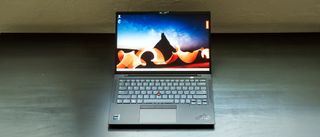
The Best Ultrabook for Work
Specifications
CPU: Intel Core i7-1355U
GPU: Intel Iris Xe (integrated)
Display: 14-inch, 1920 x 1200, 16:10, touchscreen
Weight: 2.48 pounds (1.12 kg)
Reasons to buy
+ Strong performance Long battery life Excellent input devices and speakers
Reasons to avoid
- Base screen could be brighter
There are plenty of reasons why the ThinkPad X1 Carbon is a classic. It's thin design and strong build quality are beloved by ThinkPad diehards. The latest model, the ThinkPad X1 Carbon (Gen 11), offers long battery life and great speakers.
Perhaps most critically, the ThinkPad X1 Carbon offers an excellent keyboard. Lenovo's reputation was built on great typing experiences, so this is crucial. For those who love Lenovo's TrackPoint, it's still here, allowing you to move the mouse without ever taking your fingers away from the home row on the keyboard.
The latest version comes with Intel's 13th Gen Core processors. We reviewed it with a Core i7-1355U, 16GB of RAM and a 512GB PCIe Gen 4 SSD.
The one real issue we had is that the base screen could benefit from being a bit brighter. Those who want the most vivid experience can opt for an OLED panel, but at a higher price.
When shopping for the ThinkPad X1 Carbon (Gen 11), keep an eye out for Lenovo's frequent sales, as there's often a deal available.
Read: Lenovo ThinkPad X1 Carbon (Gen 11) Review
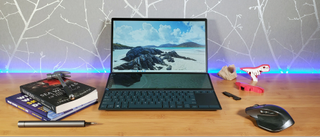
Best Dual Screen Laptop
Specifications
CPU: Intel Core i7-1165G7
GPU: Intel iris Xe
Display: 14-inch 1080p (1920 x 1080) touchscreen, 12.6 inch (1920 x 515) ScreenPad Plus
Weight: 3.5 pounds / 1.6 kg
Reasons to buy
+ $999 starting price with an i5 Very good battery life Loud speakers Improved hinge mechanism and keyboard layout
Reasons to avoid
- Keyboard/touchpad are awkward 8GB of RAM in lower configurations
Asus has begun to refine the dual screen laptop. Sure, there's a more powerful version, but for a laptop with two screens, this one is fairly light, and ran for over 10 and a half hours on a charge.
Windows 10 doesn't yet natively support dual screen software, Asus's ScreenPad Plus launcher has improved since launch, with easy flicks and drags to move apps around the display. For Adobe apps, there's custom dial-based software.
The keyboard and mouse placement are the big compromises, as there isn't a wrist rest and they can feel cramped. But if you want two-screens, this is as good as it gets for now.
Read:
Asus ZenBook Duo 14 UX482 Review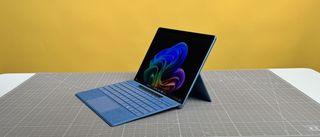
The Best Windows Tablet
Specifications
CPU: Qualcomm Snapdragon X Elite X1E-80-100
GPU: Qualcomm Adreno GPU (integrated)
NPU: Qualcomm Hexagon (45 TOPS)
Display: 13-inch PixelSense Flow, 2880 x 1920, 3:2, dynamic refresh up to 120 Hz, OLED
Weight: 1.97 pounds (895 grams) without keyboard
Reasons to buy
+ Long battery life Sleek design OLED display is beautiful More Arm-compatible apps than ever
Reasons to avoid
- Flex Keyboard is prohibitively expensive Arm compatibility issues still remain OLED display requires a CPU upgrade Can run hot under load
Microsoft may push the Surface Pro as a do-it-all AI machine, but the truth is it's just a really nice, portable, slim PC that lasts a long time on a battery and includes a beautiful OLED display. It's definitively one of the best Surfaces to date.
The Qualcomm Snapdragon X Elite processors offer enough performance to keep up with x86 competitors, making this one of the first Arm-based Surfaces that doesn't feel like it's lacking. Add on more Arm-compatible apps than ever, including the Chrome browser, and there's far less to miss from previous Intel models. That's not to say it's perfect — there are still some gaming issues, as well as drivers for specialized peripherals that may need to be rebuilt for the new platform.
The 45 TOPS NPU powers some of Windows 11's Copilot+ features, like Cocreator, Live Captions, and Windows Studio effects. None of these are showstoppers, but they're cool tricks.'
If you want a premium tablet running Windows 11, the Surface Pro is one of the only premium games in town. And that means paying a premium for a separate keyboard. But for those who love this form factor, the Surface Pro remains the best option out there.
Read: Microsoft Surface Pro review
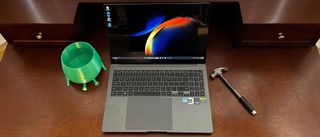
A MacBook Pro Rival Running Windows
Specifications
CPU: Intel Core i7-13700H
GPU: Nvidia GeForce RTX 4050 Laptop GPU
Display: 16-inch, 2880 x 1800, 120 Hz, 16:10 AMOLED
Weight: 3.95 pounds (1.71 kg)
Reasons to buy
+ Good overall performance Competitive battery life High-quality and sleek aluminum chassis Comfortable keyboard with number pad
Reasons to avoid
- Only available with 2880 x 1800 resolution RAM isn't upgradeable
If you want something sleek and slim like a Mac, but prefer Windows 11, Samsung may have the answer for you. The Galaxy Book 3 Ultra has clean lines and an aluminum unibody chassis, and a massive touchpad so big it might make MacBook Pro users a bit envious. It also has two things Apple doesn't currently offer - an AMOLED display and a number pad.
While its 9:03 battery life couldn't touch the MacBook Pro, it was competitive among Windows devices. And our review unit's Intel Core i7-13700H CPU, GeForce RTX 4050, 16GB of RAM and 1TB SSD delivered solid performance among competitors.
Like the Macs and a number of other thin Windows laptops, like the Dell XPS 13, the RAM is soldered down. Samsung has limited the Galaxy Book Pro to one display, with a resolution of 2880 x 1800, which is nice but not as high as what you can get on some Windows and macOS-based competitors. But if you want the style to go along with the performance, the Galaxy Book Ultra is worth considering.
Read: Samsung Galaxy Book 3 Ultra Laptop Review
- Get a good keyboard: Whether you’re using an ultrabook to browse the web, send emails, code, write, or do other productivity work, the keyboard is one of your primary ways of interacting with your computer. Get something with responsive keys that aren’t mushy. Low-travel is ok if the keys have the right feel to them, but the last thing you want to do is “bottom out” while typing. Ideally, you can try out a store model before buying.
- Consider what you need in a screen: At a minimum, your laptop should have a 1920 x 1080 screen. Some laptops offer 4K options, though it’s sometimes harder to see the difference at 13-inches or below. While 4K may be more detailed, 1080p screens give you much longer battery life. OLED screens are becoming far more common on laptops, with deep blacks and bright colors, but often at the cost of battery life. Many laptop screens still use a 16:9 aspect ratio, but consider 16:10 or 3:2 if you want a taller screen that shows more of your work at a time. 16:10 has become increasingly popular over the last several years, while 3:2 is more rare.
- Some laptops can be upgraded: While CPUs and GPUs are almost always soldered down, some laptops let you replace the RAM and storage, so you can buy cheaper now and add more memory and a bigger hard drive or SSD down the road. But the thinnest laptops may not have that option, so buy with the future in mind. Some, like the Framework Laptop 13, are designed around being easily upgradeable.
- Battery life is important: Aim for something that lasts for 8 hours or longer on a charge (gaming is an exception) at a bare minimum. For productivity, many laptops easily surpass this number, so 10 hours would be even better. But be wary of manufacturer claims, which don’t always use strenuous tests. Some laptops are starting to add fast charging, which is a nice bonus that tops you off more quickly.
Finding Discounts on the Best Ultrabooks
Whether you're shopping for one of the best ultrabooks or a laptop didn't quite make our list, you may find savings by checking out our lists of the latest Dell coupon codes, HP coupon codes, Lenovo coupon codes, Best Buy promo codes or Newegg promo codes.

 1 week ago
14
1 week ago
14
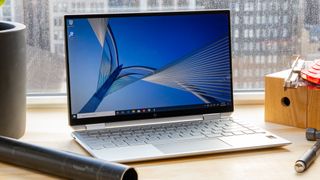
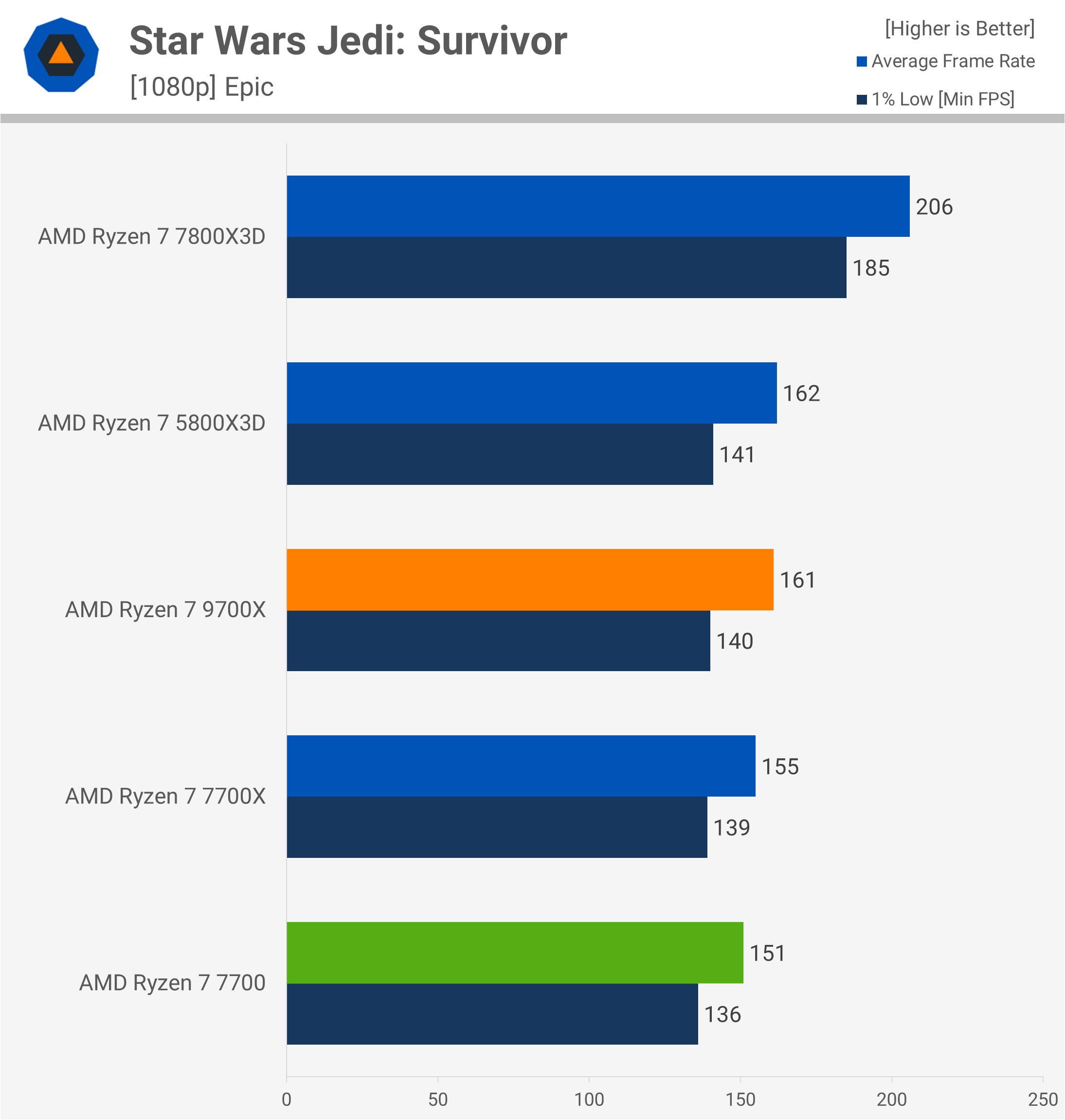

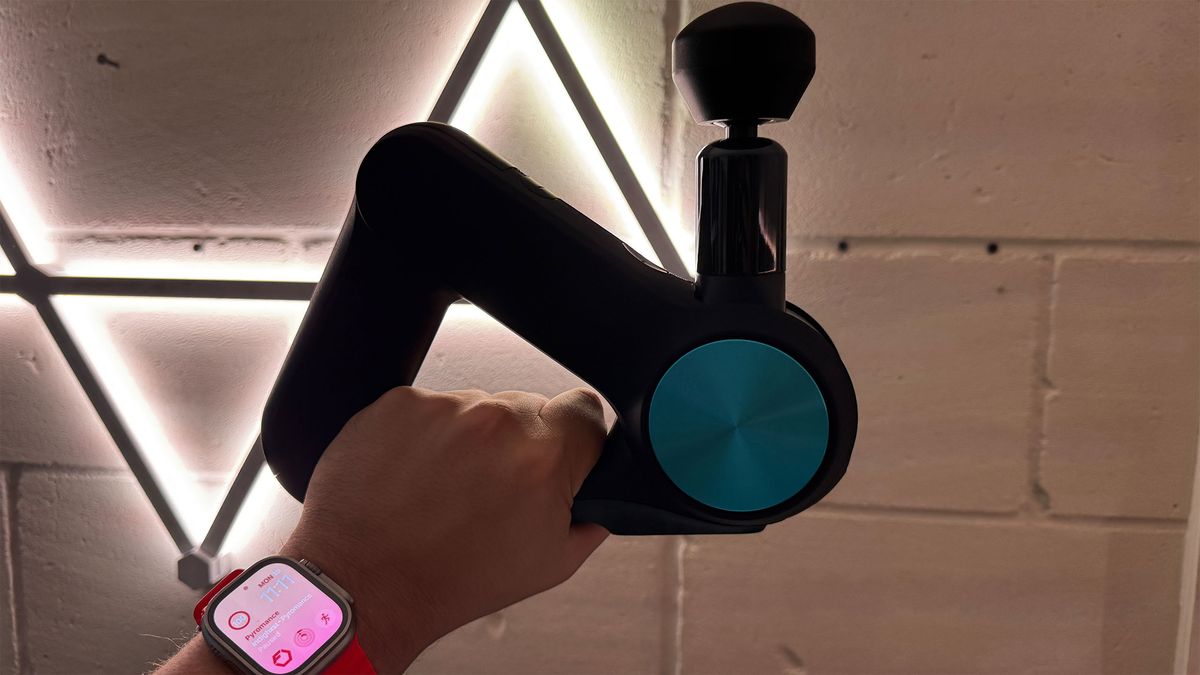


:quality(85):upscale()/2024/10/17/848/n/1922729/9dece426671163b35dcb11.60305022_.jpg)


 English (US) ·
English (US) ·